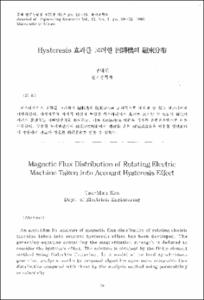EMF 측정법에 의한 Cu-Co-O System의 열역학적 연구
- Alternative Title
- The thermodynamic Studies of Cu-Co-O System by Electromotive Force Method
- Abstract
- 고체 전해질인 (ZrO₂+ CaO)를 사용하여 구성된 다음과 같은 galvanic cell들을 이용한 EMF를 측정함으로써, Cu₂O, CuO, CoO의 Cu₂CoO₃생성에 대한 자유에너지 값을 얻었으며,
Cell(1) Ni, NiO/ZrO₂(+CaO)/Cu, Cu₂O
Cell(2) Ni, NiO/ZrO₂(+CaO)/CuO, Cu₂O
Cell(3) Co, CoO/ZrO₂(+CaO)/Ni, NiO
Cell(4) Co, CoO/ZrO₂(+CaO)/Cu, Cu₂O
Cell(5) Cu, Cu₂O, CoO/ZrO₂(+CaO)/Cu,Cu₂O
Cell(6) Cu₂O, CoO, Cu₂CoO₃/ZrO₂(+CaO)/Cu, Cu₂O
Cell(7) CuO, Cu₂O, Cu₂CoO₃/ZrO₂(+CaO)/Cu, Cu₂O
그 결과들은 아래와 같다.
△ G˚??, Cu₂O=-40548+17.494 T cal/mole(970-1258K)
△ G˚??, CuO=-36062+20.084 T cal/mole(1162-1332K)
△ G˚??, CoO=-56680+17.394 T cal/mole(1126-1326K)
그리고 2 CuO+CoO=Cu₂CoO₃반응에 대한 △G˚=-1618+0.9838 T cal/mole(1162-1332K)이며, 계산된 Cu₂CoO₃의 생성에 대한 자유에너지 값은 △G˚, Cu₂CoO₃=-130423+58.542T cal/mole이다. 그리고 Cu₂CoO₃에 대한 Cu₂O와 CuO의 용해도는 매우 작았다.
The equilibrium oxygen pressures of the binary and threephase regions [Cu-O], [Co-O], [Cu, Cu₂O, CoO], [Cu₂O, CoO, Cu₂CoO₃] and [CuO, Cu₂O, Cu₂CoO₃]were measured as a function of temperature by the solid oxide electrolyte (ZrO₂+ CaO) electromotive force method.
The galvanic cells used were as follow:
Cell(1) Ni, NiO/ZrO₂(+CaO)/Cu, Cu₂O
Cell(2) Ni, NiO/ZrO₂(+CaO)/CuO, Cu₂O
Cell(3) Co, CoO/ZrO₂(+CaO)/Ni, NiO
Cell(4) Co, CoO/ZrO₂(+CaO)/Cu, Cu₂O
Cell(5) Cu, Cu₂O, CoO/ZrO₂(+CaO)/Cu, Cu₂O
Cell(6) Cu₂O, CoO, Cu₂CoO₃/ZrO₂(+CaO)/Cu, Cu₂O
Cell(7) CuO, Cu₂O, Cu₂CoO₃/ZrO₂(+CaO)/Cu, Cu₂O
The results were expressed by the following equations:
G˚??, Cu₂O=-40548+17.494 T cal/mole(970-1258K)
G˚??, CuO=-36062+20.084 T cal/mole(1162-1332K)
G˚??, CoO=-56680+17.394 T cal/mole(1126-1326K)
The measured Gibbs energy of the reaction 2 CuO+CoO=Cu₂CoO₃was found to be -1618+0.9838 T cal/mole(1162-1332K).
The evaluated Gibbs energy of formation of △G˚, Cu₂CoO was found to be -130423+58.542T cal/mole.
The solubility of Cu₂CoO₃in Cu₂O or CuO is very small.
The equilibrium oxygen pressures of the binary and threephase regions [Cu-O], [Co-O], [Cu, Cu₂O, CoO], [Cu₂O, CoO, Cu₂CoO₃] and [CuO, Cu₂O, Cu₂CoO₃]were measured as a function of temperature by the solid oxide electrolyte (ZrO₂+ CaO) electromotive force method.
The galvanic cells used were as follow:
Cell(1) Ni, NiO/ZrO₂(+CaO)/Cu, Cu₂O
Cell(2) Ni, NiO/ZrO₂(+CaO)/CuO, Cu₂O
Cell(3) Co, CoO/ZrO₂(+CaO)/Ni, NiO
Cell(4) Co, CoO/ZrO₂(+CaO)/Cu, Cu₂O
Cell(5) Cu, Cu₂O, CoO/ZrO₂(+CaO)/Cu, Cu₂O
Cell(6) Cu₂O, CoO, Cu₂CoO₃/ZrO₂(+CaO)/Cu, Cu₂O
Cell(7) CuO, Cu₂O, Cu₂CoO₃/ZrO₂(+CaO)/Cu, Cu₂O
The results were expressed by the following equations:
G˚??, Cu₂O=-40548+17.494 T cal/mole(970-1258K)
G˚??, CuO=-36062+20.084 T cal/mole(1162-1332K)
G˚??, CoO=-56680+17.394 T cal/mole(1126-1326K)
The measured Gibbs energy of the reaction 2 CuO+CoO=Cu₂CoO₃was found to be -1618+0.9838 T cal/mole(1162-1332K).
The evaluated Gibbs energy of formation of △G˚, Cu₂CoO was found to be -130423+58.542T cal/mole.
The solubility of Cu₂CoO₃in Cu₂O or CuO is very small.
- Issued Date
- 1990
- Type
- Research Laboratory
- Alternative Author(s)
- You, Yong-Zoo; Lee, Jae-Sig
- Publisher
- 연구논문집
- Language
- kor
- Rights
- 울산대학교 저작물은 저작권에 의해 보호받습니다.
- Citation Volume
- 21
- Citation Number
- 1
- Citation Start Page
- 93
- Citation End Page
- 104
- Appears in Collections:
- Research Laboratory > University of Ulsan Report
- 파일 목록
-
-
Download
 000002025369.pdf
기타 데이터 / 293.67 kB / Adobe PDF
000002025369.pdf
기타 데이터 / 293.67 kB / Adobe PDF
-
Items in Repository are protected by copyright, with all rights reserved, unless otherwise indicated.